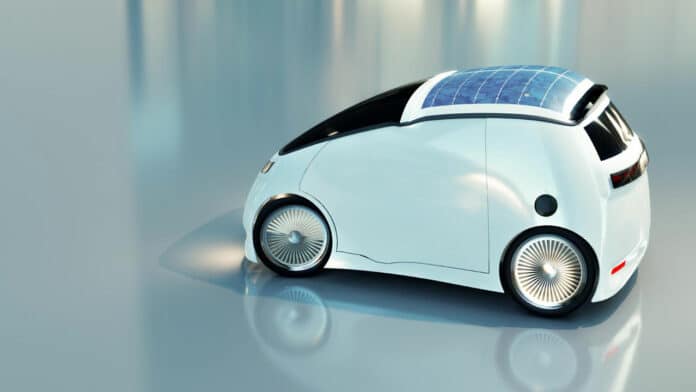With the aim of reducing greenhouse gas emissions associated with the transportation sector, policymakers are implementing various measures to promote the adoption of electric vehicles.
Despite the rapid adoption of electric vehicles, the transportation industry still accounts for approximately one-third of the world’s carbon dioxide (CO2) emissions. As a result, it is necessary to significantly reduce emissions associated with mobility in order to achieve decarbonization.
One possible solution to achieve this goal is by integrating photovoltaic modules into electric vehicles, also known as solar cars. This measure can help reduce CO2 emissions that are associated with electricity generation and lower the charging costs and frequency, providing benefits for users and the electrical grid itself.
According to a new study, solar energy provides a range between 11 and 29 kilometers (6 and 18 miles) for electric vehicles per day in urban areas across 100 different cities around the world. This could significantly reduce the need for charging, cutting it down by half.
This worldwide study was developed by researchers from Ciências ULisboa (Portugal), in collaboration with partners in France (Mines Paris – PSL) and Luxembourg (LIST).
“Cities are today the main market for electric vehicles and, due to the relatively small traveled distances, are particularly interesting for solar-powered vehicles. However, in urban areas, we have buildings, trees, and other obstacles casting shadows onto the roads, thus limiting the solar potential of driving or parked vehicles. The purpose of the work was to assess if the impact of these shadows is a significant limitation to the potential of solar cars”, explains Miguel Centeno Brito, the first author of this study.
The study also suggests that cities in Africa, the Middle East, southern Europe, and Southeast Asia are the most suitable locations for solar-powered vehicles, although there is also potential in other regions like China, North America, and Australia. While losses associated with shading in the city are around 25%, making them ideal for the widespread adoption of this technology.
The research team recently initiated a campaign in collaboration with citizen scientists to verify the model experimentally. As urban populations continue to grow and environmental sustainability remains a pressing concern, solar-powered vehicles could not come at a more opportune time.
“Our results can help establish a roadmap for policymakers and the automotive industry to accelerate the transition to a more sustainable and environmentally friendly urban future,” concludes Miguel Centeno Brito.
